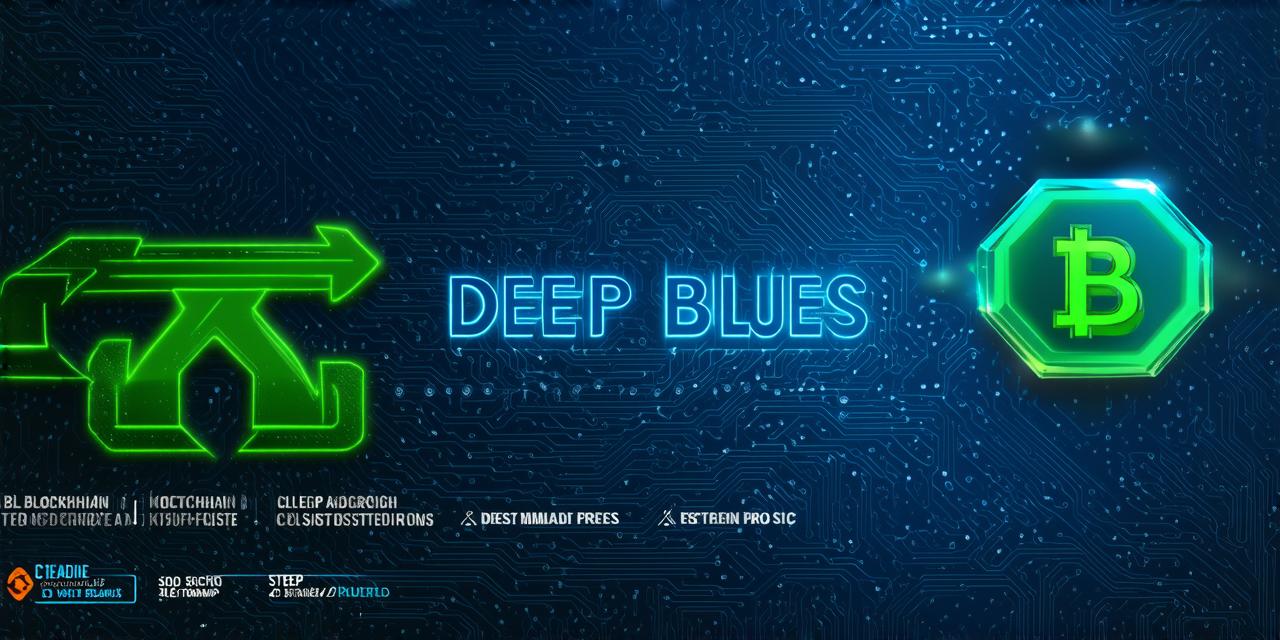Title: Downloading the Latest Version of a Blockchain to a Node: A Comprehensive Guide for Blockchain Developers
Understanding Blockchain Nodes

A blockchain is a decentralized network that allows for secure and transparent transactions without the need for intermediaries. Each participant in the network has a copy of the ledger, which contains all the transactions that have taken place.
To ensure the integrity of the blockchain, nodes are used to validate transactions and maintain the ledger.
Choosing a Blockchain Platform
There are several blockchain platforms to choose from, each with its unique features and capabilities. Some popular blockchain platforms include Bitcoin, Ethereum, Hyperledger Fabric, Corda, and Ripple.
When choosing a blockchain platform, consider the following factors:
- Use case: Different blockchain platforms are designed for different use cases. For example, Bitcoin is primarily used for digital currency transactions, while Ethereum is more suitable for decentralized applications (dApps).
- Scalability: Some blockchains, like Bitcoin, have limited scalability, which can lead to slow transaction times and high fees. Other platforms, like Hyperledger Fabric, are designed to be scalable and flexible.
- Security: Each platform has its security measures in place to protect against malicious attacks. Consider the level of security you require for your use case.
- Community support: A strong community of developers and users can help you troubleshoot issues and find solutions.
Requirements
Before downloading the latest version of a blockchain to your node, ensure that your machine meets the following requirements:
- Operating system: The blockchain software is compatible with most operating systems, including Windows, macOS, and Linux. Check the software documentation for specific requirements.
- Processor: A minimum processor speed of 2 GHz is recommended. However, higher-speed processors can improve performance.
- RAM: A minimum of 4 GB of RAM is recommended. However, more RAM can improve the node’s responsiveness and stability.
- Storage space: The blockchain software requires a significant amount of storage space, depending on the platform and version. Check the software documentation for specific requirements.
- Internet connection: A stable internet connection is required to download the latest version of the blockchain and to participate in the network.
Downloading the Blockchain Software
To download the latest version of a blockchain to your node, follow these steps:
- Visit the official website of the blockchain platform you have chosen. For example, if you are using Bitcoin, visit https://bitcoin.org/download/.
- Download the appropriate software for your operating system from the downloads section of the website.
- Follow the installation instructions provided with the software. This may involve extracting the downloaded files, configuring settings, and running the software.
- Once the software is installed, it will automatically download the latest version of the blockchain to your node. This process can take several hours depending on the size of the blockchain and your internet connection speed.
- After the download is complete, you can verify that the blockchain is synced by checking the block height or the transaction history.
Setting Up a Full Node
Once the latest version of the blockchain is downloaded to your node, follow these steps to set it up:
- Configure the settings for your node, such as the port number and IP address. You can find these settings in the software documentation or by default.
- Start the node by running the software on your machine. This will start the node’s processes, which include downloading the blockchain data, validating transactions, and maintaining the ledger.
- Monitor the progress of your node using the software’s dashboard or by checking the logs. You may need to troubleshoot issues if you encounter any problems during this process.
- Once your node is fully synced with the blockchain, it will start receiving new transactions and maintaining the ledger.
Running a Full Node
Running a full node on your machine requires some maintenance and attention. Here are some tips to help you keep your full node running smoothly:
- Keep your software up to date: Regularly update the software to ensure that you have access to the latest features and security patches.
- Monitor performance: Keep an eye on your node’s performance metrics, such as CPU usage, memory usage, and disk space usage. If any of these metrics are high, consider upgrading your hardware or optimizing your settings.
- Backup your data: Regularly backup your node’s data to protect against data loss in case of a system failure or malware attack.
- Participate in the network: Engage with other participants in the blockchain network by validating transactions and creating new blocks. This helps maintain the integrity of the blockchain and supports its growth.
Summary
Downloading and setting up a full node on your machine is an essential step for any blockchain developer who wants to participate in the network and build decentralized applications (dApps). By following these steps, you can ensure that your node is fully synced with the latest version of the blockchain and is ready to receive new transactions and maintain the ledger. Remember to keep your software up to date, monitor performance, backup your data, and participate in the network to maintain the integrity of the blockchain and support its growth.
FAQs
Here are some frequently asked questions about running a full node:
1. How long does it take to download the latest version of a blockchain?
The time it takes to download the latest version of a blockchain depends on the size of the blockchain and your internet connection speed. It can take several hours or even days to complete the download process.
2. What are the requirements for running a full node on my machine?
To run a full node, you need a computer with an operating system that supports the blockchain software, a minimum processor speed of 2 GHz and 4 GB RAM, and significant storage space for the blockchain data. You also need a stable internet connection to download the latest version of the block
